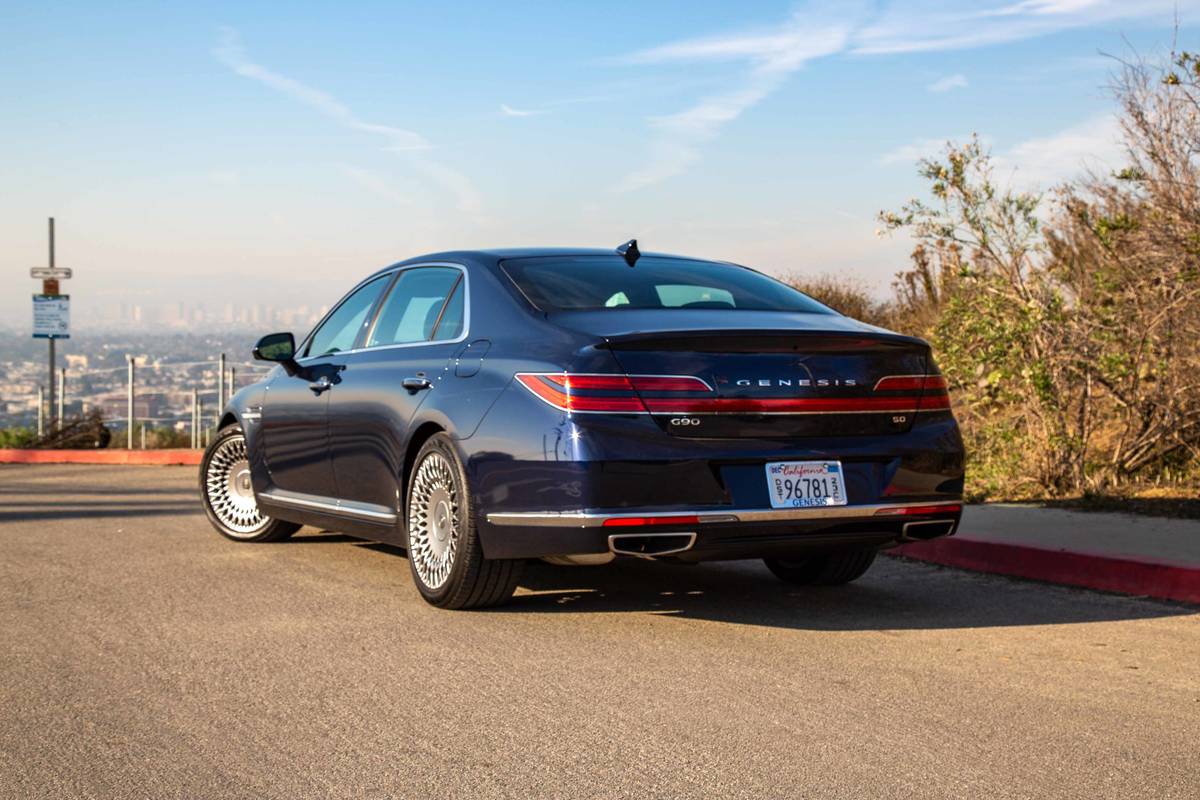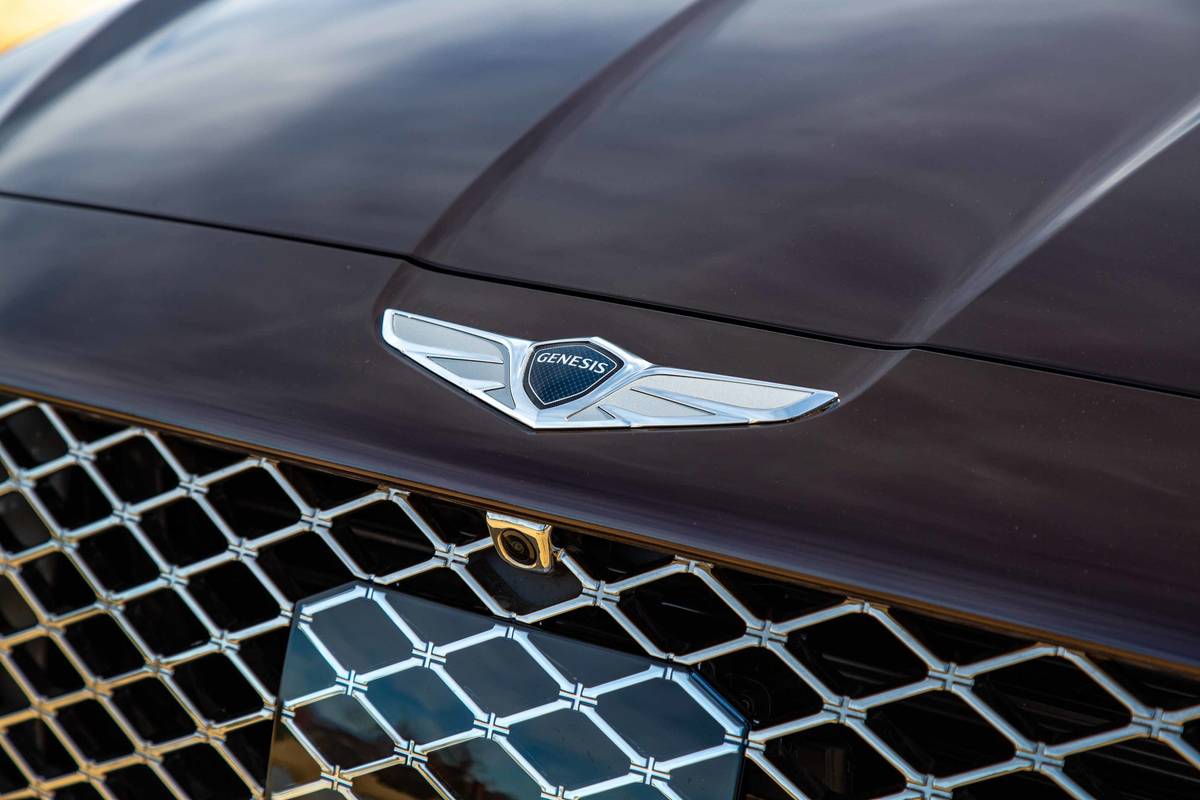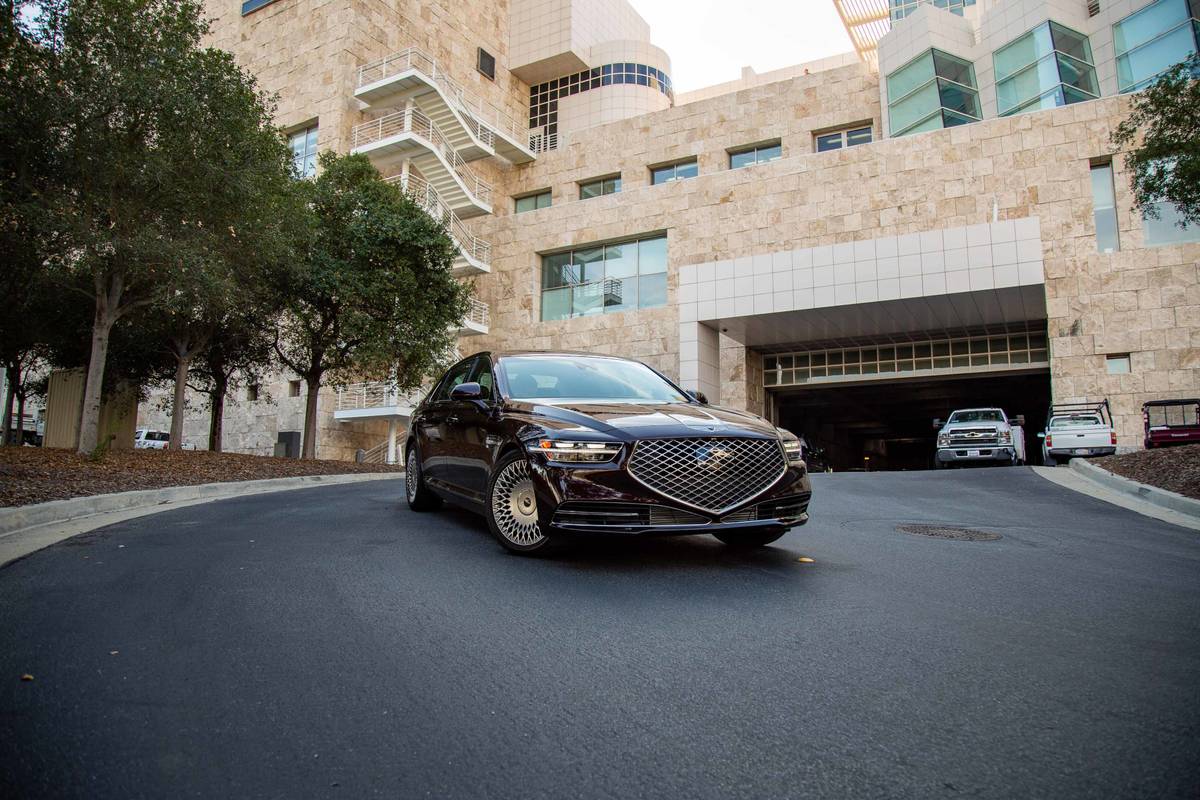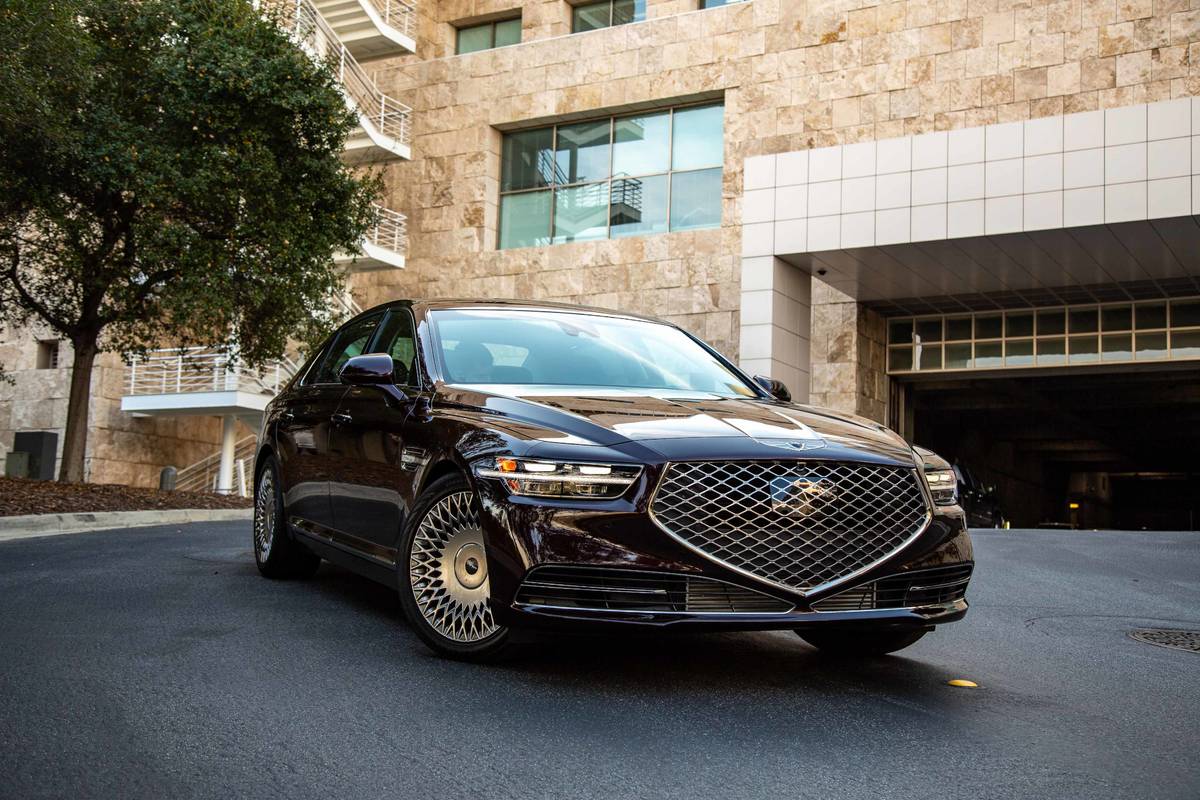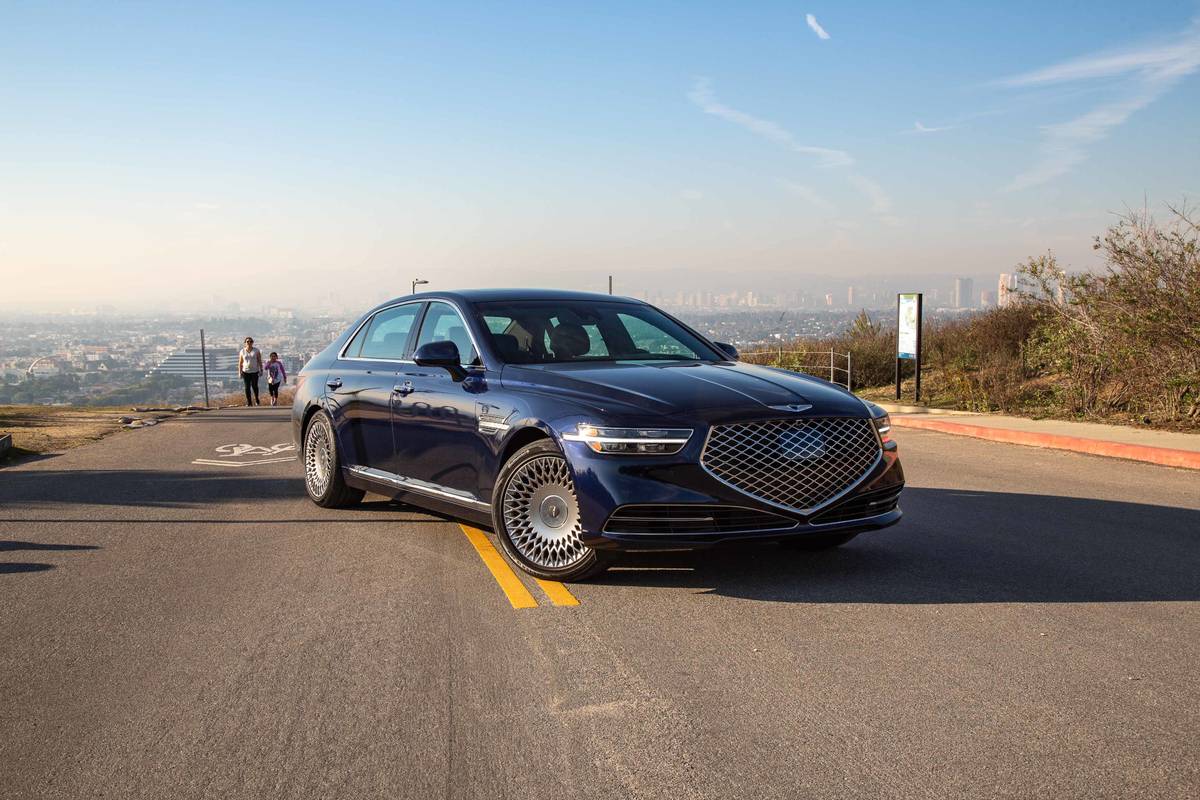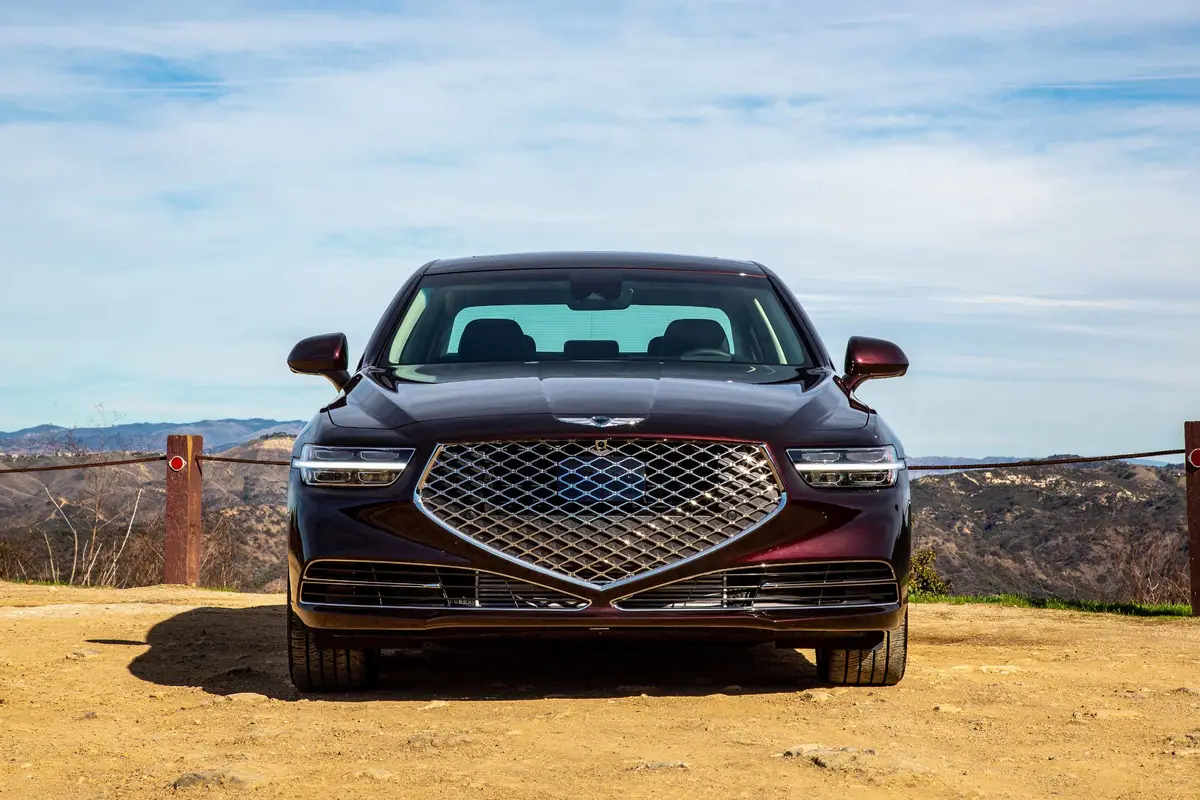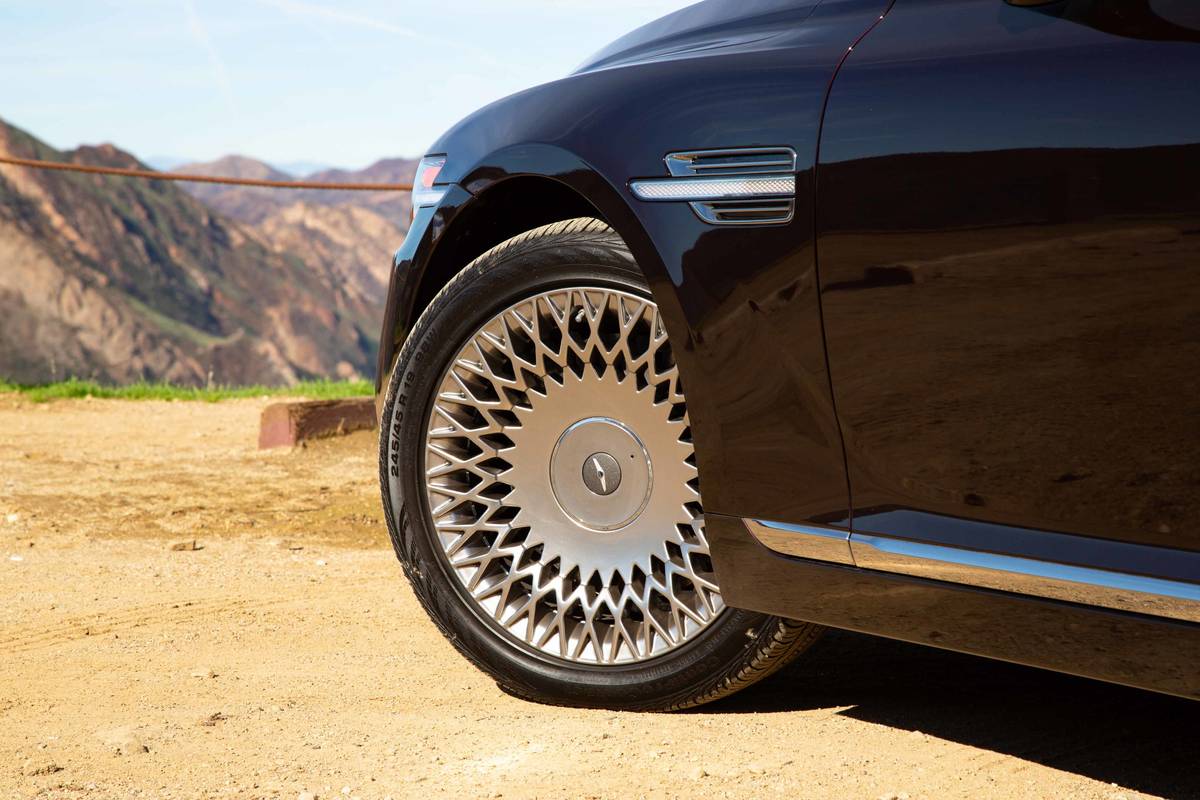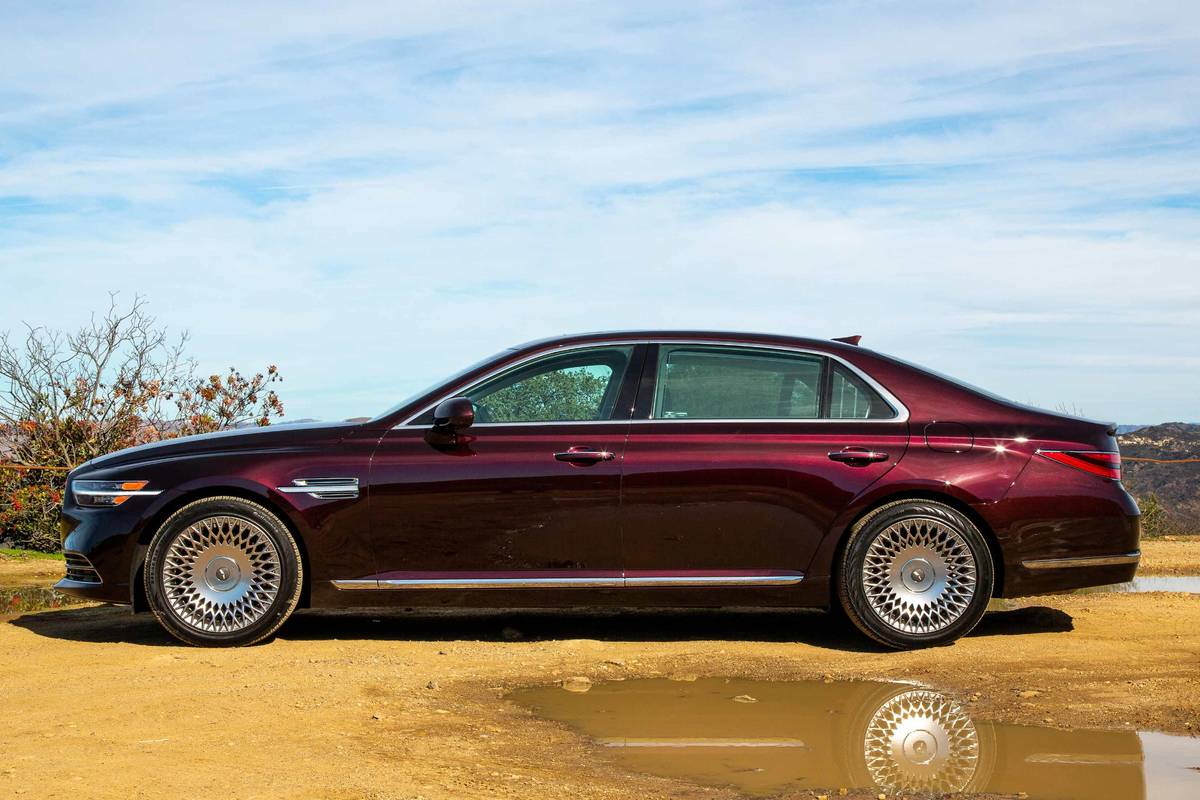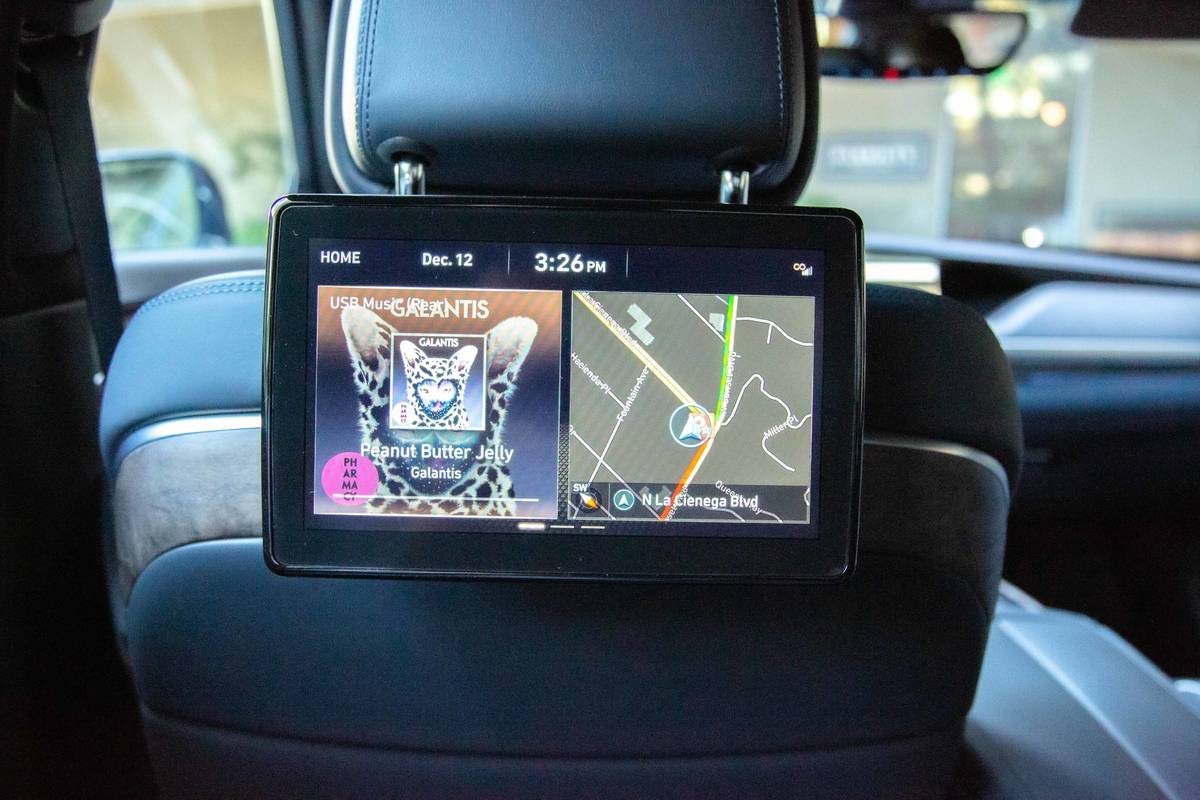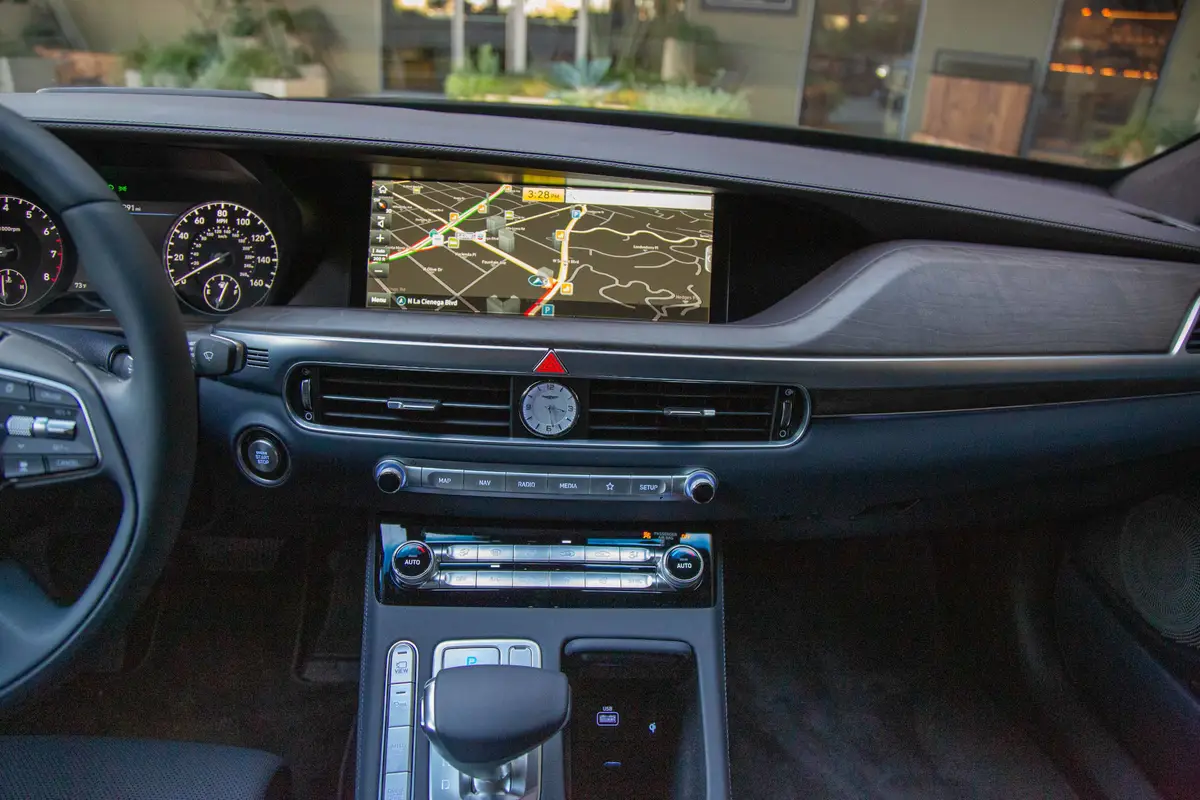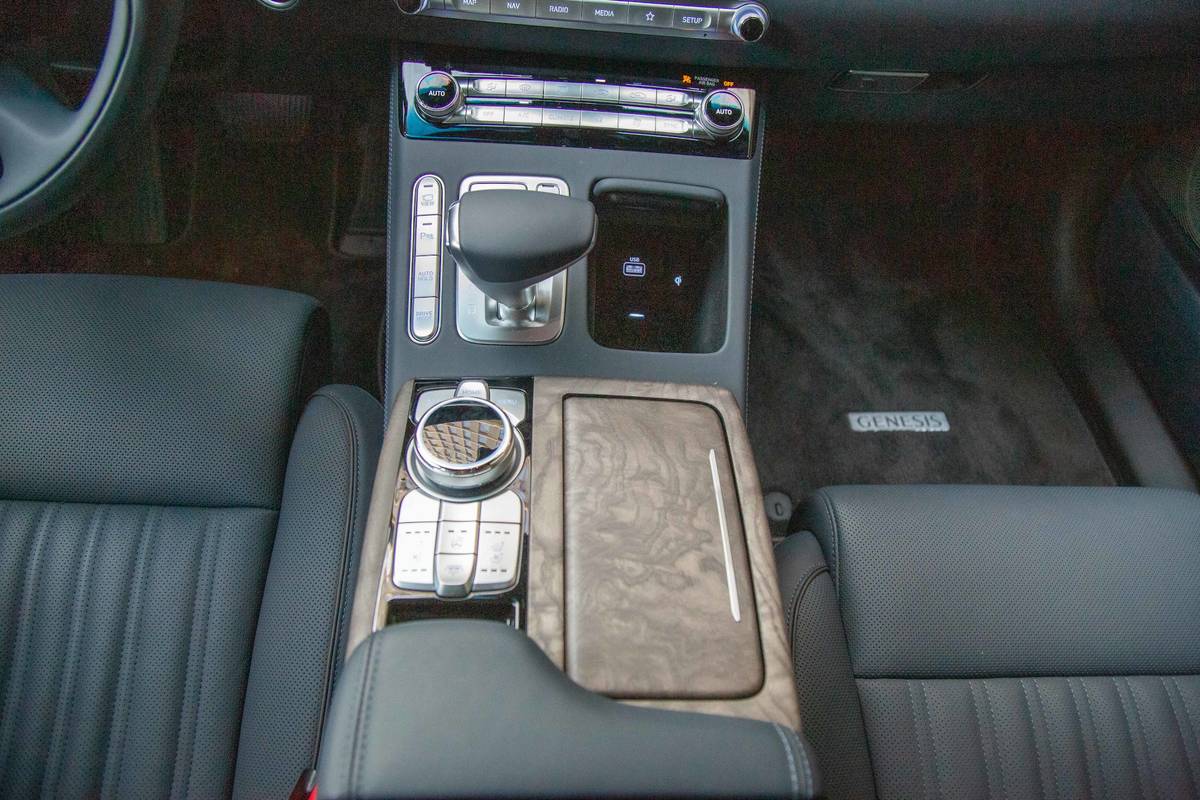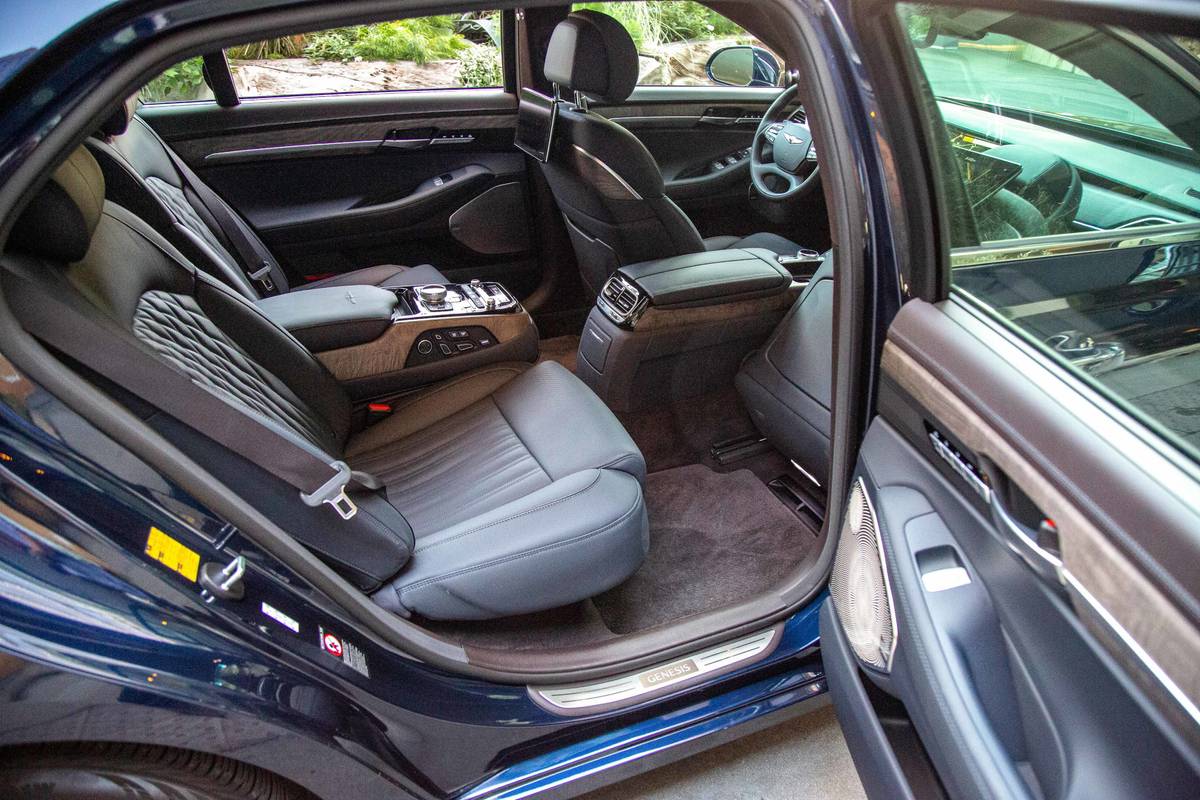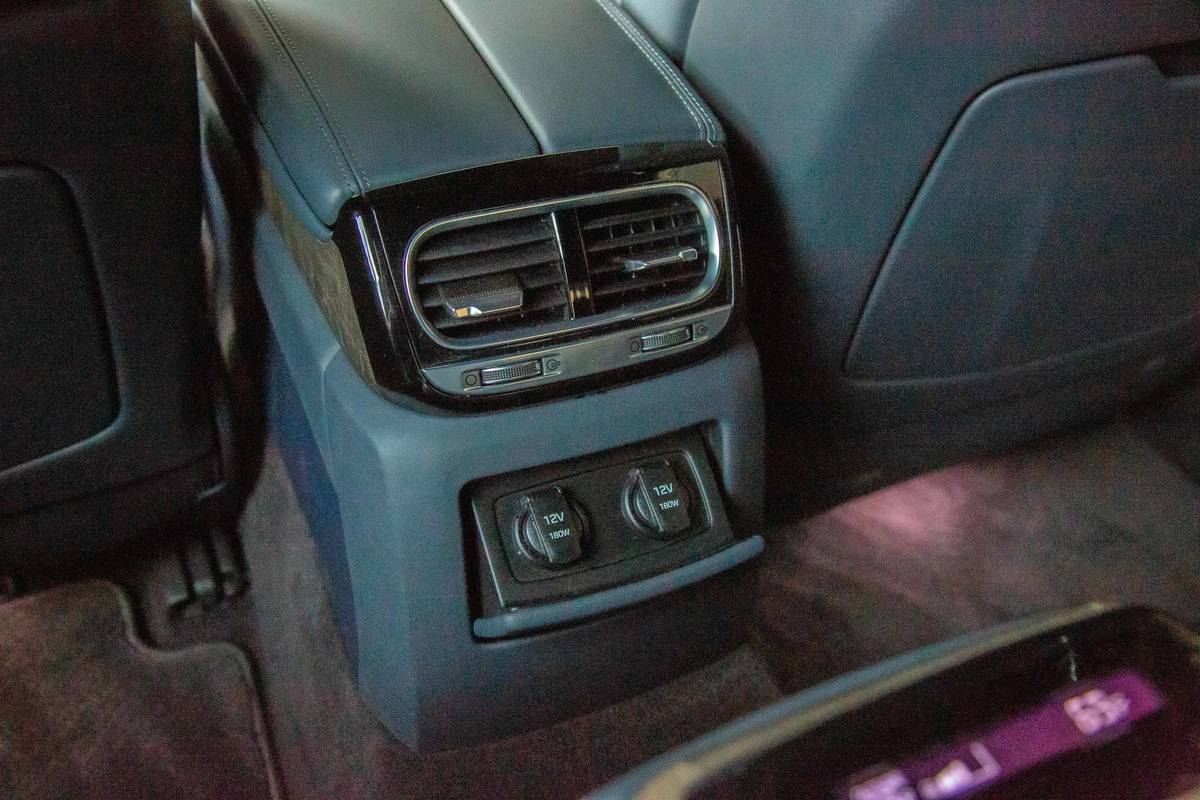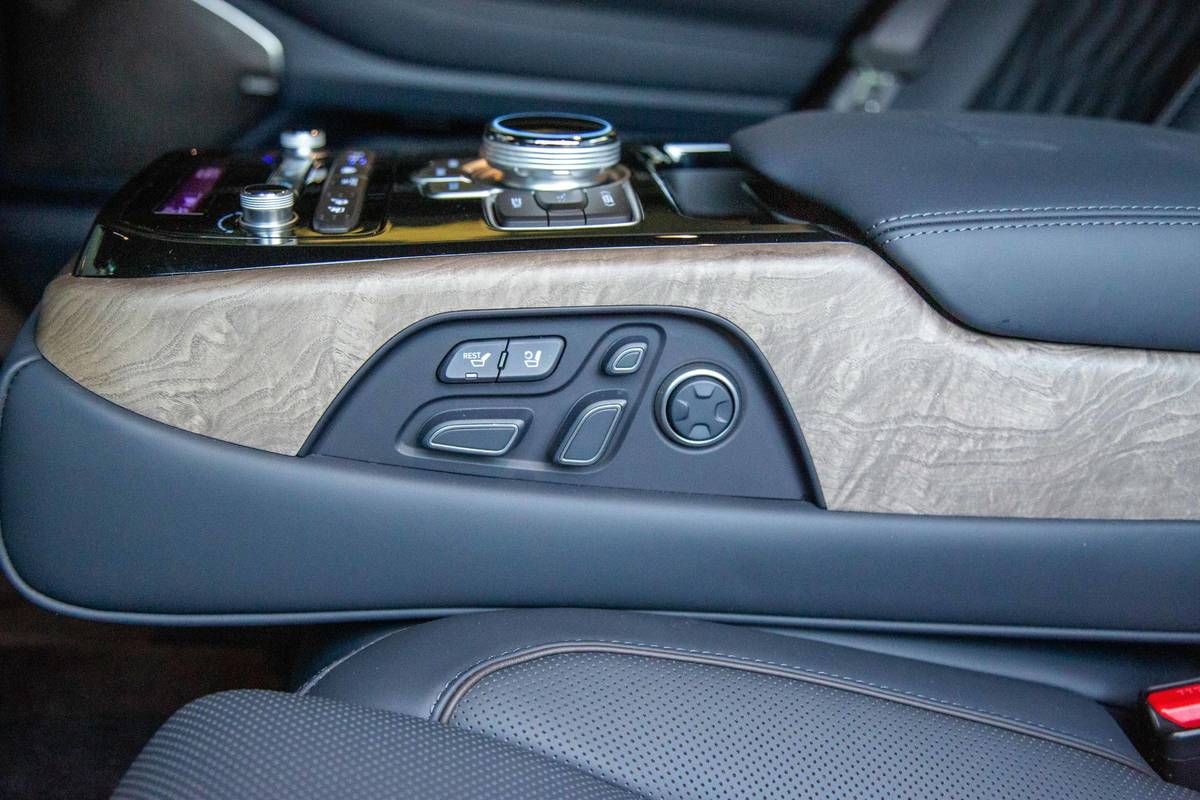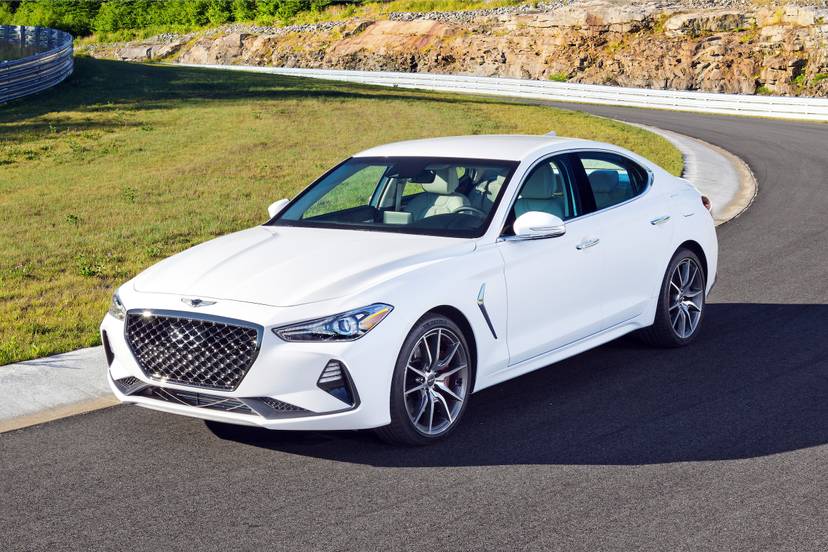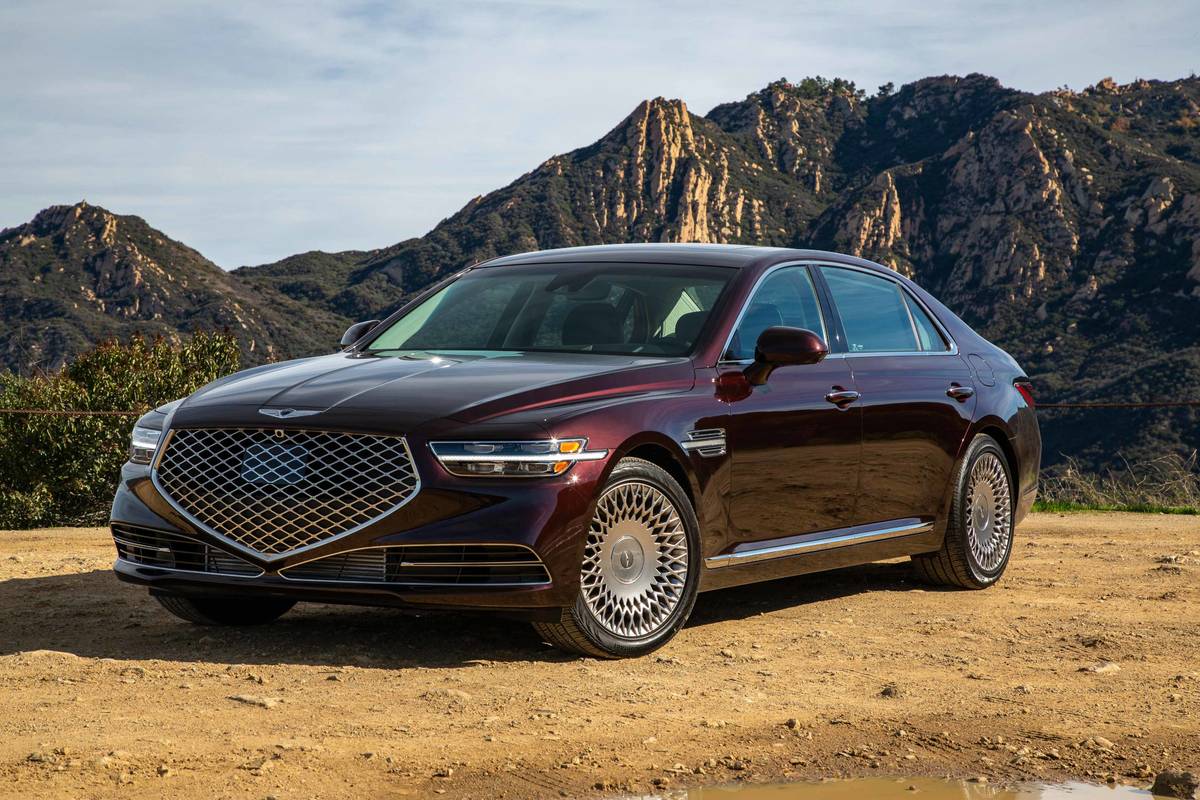
Looking at the 2020 Genesis G90 can be misleading. The heavy exterior styling updates hint at larger changes, but the powertrains have carried over exactly and the interior has much the same look and feel. Technology and safety updates do increase the G90’s ease of operation and day-to-day livability, but the feel of the car and how it drives are held pretty much constant. That isn’t a bad thing because the G90 was rather good to start with.
Related: 2020 Genesis G90 Refresh Makes a Great Luxury Car Even Better
New Smile (or Snarl?)
The doors and roof are the same for 2020, but all of the other body panels have changed. It’s easiest to see the updates at the G90’s nose, where the largest and most controversial new styling piece sits: a gigantic grille.
It soaks up all of the visual space at the front of the car, dipping way down low to a point where there isn’t really a bumper to speak of. The grille’s geometric pattern gets repeated throughout the car: on the wheels, the interior stitching and even on the LED daytime running lights. How observers feel about the grille varies widely; even on our staff, opinions were mixed — and by mixed, I mean I’m the one who didn’t like it overall. However, getting the G90 out of the auto show lights and into the real world helps, and I found myself coming around on the new grille (and those delightfully funky wheels).
There is still one thing that gives me a lot of pause: what it might look like with a front license plate attached. The only spot to put it is very low, below the front radar that has been hidden in the top half of the grille. But that will cover up the bottom point of the grille, which is where the whole design culminates. And with 31 states currently requiring front license plates, this is a problem many buyers will have to contend with — unless you intend to use the money saved by choosing a G90 over a European competitor to pay those tickets.
Engines Remain Strong
Genesis will continue to offer the same two powertrains in the G90: a standard 365-horsepower, twin-turbocharged 3.3-liter V-6 and an available 420-hp, 5.0-liter V-8 which. Both come mated to an eight-speed automatic transmission. Rear-wheel drive is standard, and all-wheel drive is available with either engine. Genesis also confirmed that fuel economy figures will remain the same.
I drove the G90 with both engines in RWD configuration, and each powertrain still feels solid. The 3.3T is universally good in every Hyundai/Genesis (and Kia, Hyundai’s close relative) that we’ve tested it in, and it’s great here, as well. The V-8, though its torque kicks in a little bit higher up, still has more than enough power and responsiveness to provide more than ample performance. Both engines offer effortless acceleration that matches the luxury experience the cabin promises.
The G90’s ride quality and composure remain outstanding. Our drive route also took us through the canyons above Malibu, Calif., on several roads that I usually use to test out sports cars. The big sedan didn’t quite excel in that environment; it never lets you forget that it’s a large car that you’re trying to hustle around curves. But the suspension does a good job mitigating body roll to keep things eerily calm while the world blurs around you. The G90 rides and drives like a true luxury flagship, with a whisper-quiet cabin to match.
Technology and Safety Updates
The interior is still great, and fit and finish are first rate. It still feels like a $100,000 interior, but you’re getting it in a mid-$70,000 car. As much as the exterior style has changed, the interior is basically the same. There is new open-pore wood, and some of the other textures have changed, but everything is in the exact same place, including the dashboard display, which gets some notable upgrades.
The screen is the same size (12.3 inches), but it’s now a touchscreen, which offers another way to interact with the multimedia system than the knob in the center console. I was also happy to see this change because the G90 has added Android Auto and Apple CarPlay, both of which are optimized for a touchscreen. Android users take note that Android Auto doesn’t use the whole screen — a panel that takes up about a quarter of the screen on the right simply shows the Android Auto logo. (Sometimes display issues like these are due to the smartphone app, not the car, and they can be resolved with future updates, but Apple CarPlay already uses the whole screen and avoids this issue.) Also note that in 5.0 Ultimate models, which have screens and a multimedia controller for the backseat, Android Auto and Apple CarPlay functions can’t be controlled from the back.
Genesis says that the G90 has also added nine new or updated safety technologies for 2020, all of which come standard. They include Highway Driving Assist, Lane Following Assist, rear cross-traffic avoidance assist, Parking Collision Avoidance Assist, a blind spot monitor, a slow-down function for highway curves, more views for the 360-degree camera system, safe exit assist for the rear doors, and an update to the forward emergency braking system to detect lane changes and oncoming traffic.
The most notable of these additions is Highway Driving Assist (which includes Lane Following Assist), a system we have tested previously in the Hyundai Palisade and Kia Telluride that works great, keeping the car tracking straight down the center of the lane with minimal drama while maintaining following distance from a lead vehicle. The blind spot monitor activates when the turn signal is turned on and shows a live video feed of that side in the 7-inch instrument panel display that appears between the gauges. I’m hoping to eventually see a fully digital instrument panel in the G90 that would make the system more like the one in the Palisade, which shows the live feed on the side of the display you signal toward.
Small Gains
The title of this section doesn’t just refer to the G90’s changes, which have incrementally moved the G90 forward from its good starting position. It also refers to pricing: Final figures were not yet available for the G90 as of publication, but Genesis said any price increases would be “minimal.” This means the G90 keeps its crown as perhaps the best value in luxury because the 2019 G90 started at $70,345 including destination charges for the 3.3T Premium and $74,845 for the 5.0 Ultimate. Using those figures as a baseline, even with a price increase, the G90 will still be an incredible value. There’s a large gap between the G90 and its full-size luxury sedan competition, both in starting price and especially as you add option packages to those other vehicles because the G90’s standard equipment list is so formidable. Though the G90 does lack some of the bells and whistles found in the very top echelon of luxury sedans, it can be forgiven because it’s so damn affordable by comparison.
The uphill battle for Genesis doesn’t lie with the inherent quality of its sedans, all three of which have solid appeal and compare well to their classes. It’s still awareness, trying to get into the minds of luxury car shoppers. Though the G90’s structure remains the same, changing the look of it might move the needle some in that regard.
The 2020 G90 hits dealerships by the end of December.
Cars.com’s Editorial department is your source for automotive news and reviews. In line with Cars.com’s long-standing ethics policy, editors and reviewers don’t accept gifts or free trips from automakers. The Editorial department is independent of Cars.com’s advertising, sales and sponsored content departments.
































